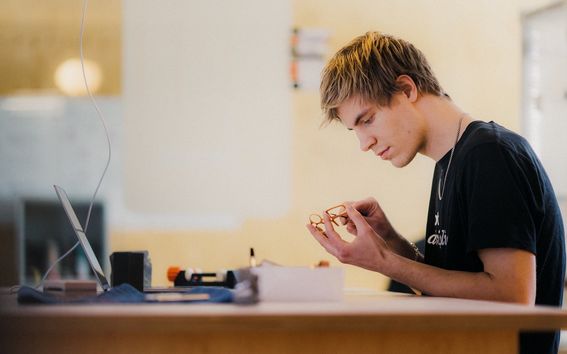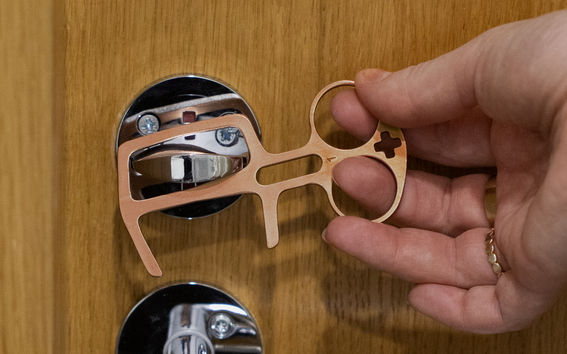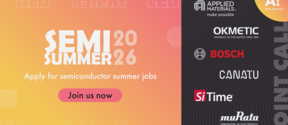Sculptor creates freely available design for antimicrobial touch guard to save your hands from germs
In March, Erwin Laiho, who works as a laboratory technician at the Aalto Design Factory in Finland, came across an inventive DIY tool online. A handy tool even in normal times, it was meant to avoid touching surfaces with bare hands in public places.
‘The Wuhan Hook impressed me, but I immediately started considering how I could improve it with the help of research and product development,’ Laiho says.
Laiho looked for a functional form for the touch guard by exploring upper limb prostheses, different tools and jewellery. For its material he chose copper, known for its antibacterial properties.
Laiho also put special consideration into where the gadget is stored: after use, it slides into a protective cover. Clinical trials have shown that it takes between minutes and a few hours for copper surfaces to destroy viruses and microbes. The cover acts to isolate the microbes for the time required for them to die, thus preventing their spread to other surfaces.

Naturally antimicrobial
Speedily designed with the help of Aalto Design Factory equipment and expertise, Laiho named the touch guard Space Key after its key-like function and appearance. After dozens of prototypes and testing, the final shape was defined by experimenting and modifying the tool to fit handles, taps and toilet turn-locks, knobs and lids of different sizes.
Professor of Mechanical Engineering and Product Development Kalevi Ekman supervised the work.
‘We always want to produce a large quantity of prototypes in a short space of time. This way, we can avoid the pitfalls related to usability and the need for improvements to the manufacturing process at a later stage, which actually may spoil the whole idea of the product,’ Ekman says.
Laiho picked up a few tips on the possibilities and limitations of copper from Senior Aalto University Lecturer Jari Aromaa. Copper is a material that stays clean germ-wise, as it is naturally toxic to microbes without the need for processing or charging. Even patina on the surface does not reduce its effectiveness.
In fact, there is a long history of using copper for this purpose. As early as in the 1700s, copper alloys were used to control micro-organisms, when hulls of ships were covered with copper to prevent microbial growth.
‘Nowadays there are over 400 copper alloys approved by the United States Environmental Protection Agency EPA. Copper is really well-suited for the touch guard because it’s easy to work and is readily available,’ says Aromaa.
Professor of Microbiology Katrina Nordström tested the functionality of the touch guard in everyday situations.
‘Space Key is a great solution for reducing the microbiological load. Another advantage of copper is that it doesn’t seem to cause bacteria to develop resistance. Further research is still required to find out how quickly copper destroys viruses and how the amount of virus affects this speed,’ Nordström says.
The touch guard can be particularly useful in facilities such as hospitals, as well as people sensitive to infections, as well as those who travel frequently.
Anyone can freely manufacture and modify the model under license. Drawings are openly distributed under the CERN Open Hardware licence.
Space Key has been commercialised by Aalto spin-off company Studio i Ore.
More information:
Erwin Laiho
Design Technician, Aalto Design Factory
Aalto University
+358 50 432 7700
erwin.laiho@aalto.fi

Read more news

The semiconductor sector jobs open in research groups
Semi-Summer 2026 programme will provide an opportunity to gain the skills needed in a growing and international semiconductor sector.
New cooperation agreement between the City of Helsinki and Aalto University to strengthen a sustainable, vibrant and knowledgeable city
The main themes of the cooperation are vitality, innovations and entrepreneurship, as well as research cooperation and knowledgeable labour, drawing heavily on the research and education expertise of the university.
Aalto Inventors innovation training coming for hydrogen, quantum and microelectronics researchers this spring
Connect with industry and academic thought-leaders and gain widely applicable skills in communication, intellectual property, and business.






